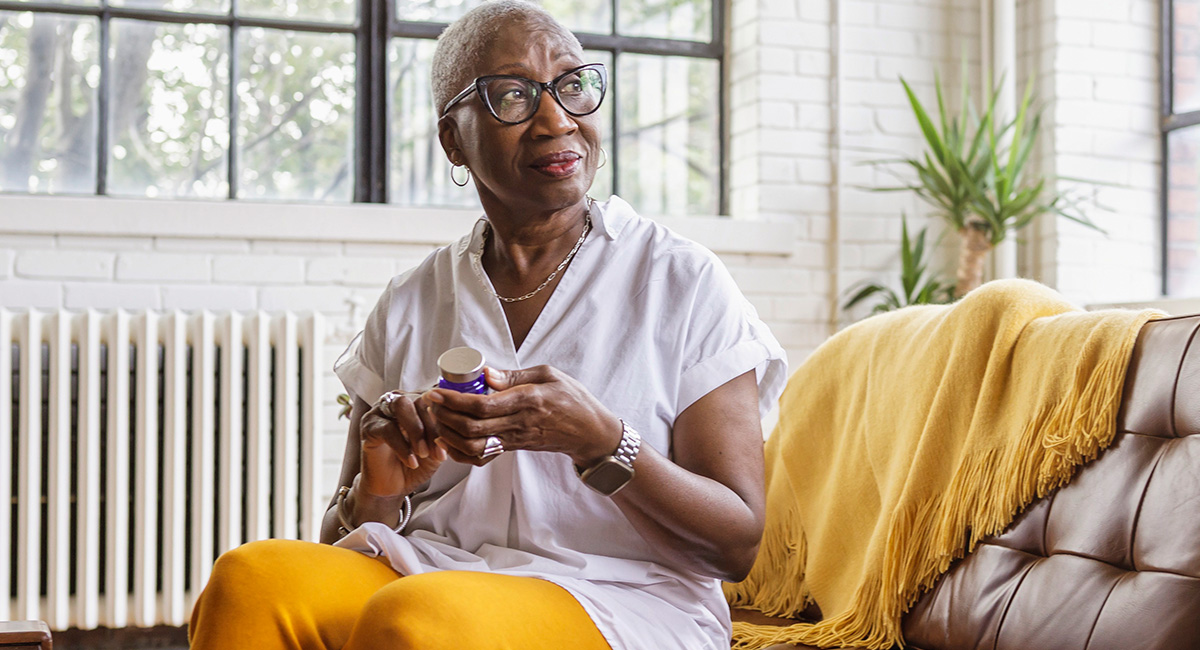Osteoarthritis of the Knee
Knee OA is a very common source of pain that can limit your mobility.
The knee is one of the most common joints to be affected by osteoarthritis (OA), and it can lead to serious effects on one’s mobility, quality of life and livelihood. Pain, swelling and stiffness from cartilage damage and loss can make it difficult even to walk or climb stairs. And if you have a job that requires you to be on your feet and moving, worsening knee OA will make it difficult or impossible. That’s why knee replacement is one of the most common orthopedic surgeries performed in the United States, and it’s being done at younger ages as people live longer and strive to extend their activities and quality of life.
Although a lot of research is underway to learn more and to seek new and better treatments for knee OA, its causes are not clear.
Causes of Knee OA
- Age: OA can occure at any time of life, but it is most common in older adults.
- Sex: Women are more likely to have knee OA than men.
- Obesity: Being overweight add stress to your knees. Fat cells also make proteins that can cause inflammation in and around your joints.
- Injuries: Any knee injury, even old ones, can lead to knee OA.
- Repeated Stress: Frequent stress on your knee from your job or playing sports can increase risk for OA.
- Genetics: You can inherit a tendency to develop OA.
- Bone Deformities: If you have croooked bones or joints, you are at higher risk.
- Some Metabolic Diseases: Diabetes and hemochromatosis, a condtion in which your blood has too much iron, have been linked to OA.
Symtoms of Knee OA
Symptoms of knee OA develop slowly and worsen over time.
- Pain: Movement causes pain. Sometimes your knee will ache while sitting still.
- Stiffness: Your knees may be stiff first thing in the morning or after sitting for a long time.
- Loss of motion: Over time, you may lose the ability to bend and straighten your knee all the way.
- Creaking and grating (crepitus): You may hear crackling noises or feel a grating sensation.
- Instability: Your knee may “give out” or buckle, or feel like it could.
- Locking: The knee may lock or stick.
- Swelling: Your knee may get puffy all around or on one side.
Diagnosing Knee OA
To diagnose OA, your doctor will check for:
- Swelling, warmth, redness or soreness in or around the joint.
- Range of motion – how much you can move your knee.
- Instability of the joint – how loose is the joint.
- Pain from weight being placed on the knee.
- Gait problems -- how you walk.
- Any signs of injury.
Most likely your doctor will order X-rays of one or both knees. Cartilage does not show up on X-ray, but cartilage loss is seen because the space between the bones is thin. X-rays can show bone spurs (bony points on the edges of the joint). Sometimes, magnetic resonance imaging (MRI) might be used to get a picture of the knee that includes both bone and soft tissue.
The doctor may draw your blood or take fluid from your knee with a needle to rule out other forms of arthritis.
Treatments for Knee OA
Osteoarthritis of the knee cannot be stopped or reversed. But treatments can reduce pain and help you move better.
Non-Drug Treatments
Use these basic self-care strategies to manage your symptoms:
- Apply ice or heat to help ease stiffness, pain and swelling.
- Lose weight (if necessary) to help reduce stress on the knees.
- Keep moving with activities like swimming, biking or walking.
- Try physical therapy. A therapist can provide exercises to increase strength, range of motion and flexibility.
- Consider acupuncture or massage for pain relief.
- Use a cane, shock-absorbing shoe inserts or a brace.
- Try a topical cream that includes ingredients like capsaicin, menthol, camphor or CBD.
Drug Treatments
Several medicines are available that can help ease your OA symptoms.
- Oral medications that include acetaminophen (Tylenol) and non-steroidal anti-inflammatory drugs (NSAIDs; Advil, Aleve) can help ease pain.
- Gels or creams that inlcude NSAID (Voltaren), lidocaine (Aspercame) and salicylates that can be rubbed on the knee.
- Steroid (glucocorticoids) injections offer inflammation and pain relief. You can get only three or four per year.
- Lubrication injections (hyaluronic acid) help ease pain and improve mobility for some people.
- Duloxetine (Cymbalta) is sometimes used to treat the chronic pain of OA.
Surgical Treatments
If nothing else helps your pain, you and your doctor may decide surgery is needed.
- Arthroscopy is not usually recommended for knee OA. However, you may get some relief by removing bone spurs and loose pieces of cartilage.
- Cartilage grafting might be an option for younger patients who have small areas of cartilage damage. Healthy cartilage is used to fill a hole in the cartilage of your bad knee.
- Knee osteotomy is done if just one side of the knee joint is damaged. Either the tibia (shinbone) or femur (thighbone) is cut and reshaped. This helps shift weight off the damaged side of the joint and can relieve pain and improve function.
- Total or partial knee replacement (arthroplasty) may be required. Your doctor removes the damaged cartilage and bone, and then puts in new metal or plastic joint surfaces to restore the function of the knee.
Sources
Bhatia D, et al. Current interventions in the management of knee osteoarthritis. https://www.ncbi.nlm.nih.gov/pmc/articles/PMC3612336/
McAlindon TE, et al. OARSI guidelines for the non-surgical management of knee osteoarthritis. https://www.oarsi.org/sites/default/files/docs/2014/non_surgical_treatment_of_knee_oa_march_2014.pdf
Moving away from knee osteoarthritis. https://www.health.harvard.edu/pain/moving-away-from-knee-osteoarthritis
Osteoarthritis. https://www.mayoclinic.org/diseases-conditions/osteoarthritis/symptoms-causes/syc-20351925
Wallace IJ, et al. Knee osteoarthritis has doubled in prevalence since the mid-20th century. https://www.ncbi.nlm.nih.gov/pmc/articles/PMC5584421/
Zhang Y and Jordan JM. Epidemiology of osteoarthritis. https://www.ncbi.nlm.nih.gov/pmc/articles/PMC2920533/
Stay in the Know. Live in the Yes.
Get involved with the arthritis community. Tell us a little about yourself and, based on your interests, you’ll receive emails packed with the latest information and resources to live your best life and connect with others.


